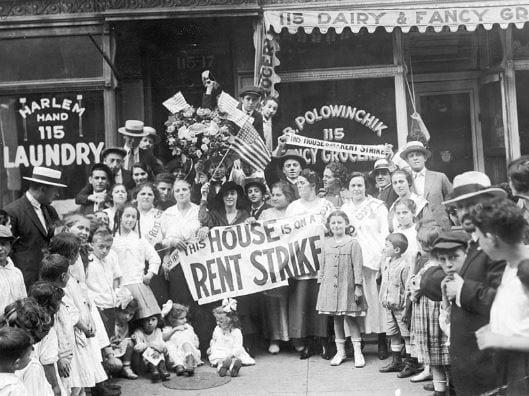
Renting vs Owning: The Evolving Landscape
Updated Nov 2023
Amidst the backdrop of increasing living costs globally, the deliberation between renting and owning a home has emerged as a significant and ongoing discussion. The evolving landscape of this debate reflects a range of factors that have shaped housing decisions in recent years. One crucial aspect is housing affordability, as rising home prices, stagnant wages, and limited housing supply have made homeownership more challenging for many individuals and families. Consequently, renting has become a viable alternative, offering a more attainable option for those unable or unwilling to shoulder the financial responsibilities of owning a home.
Another factor influencing the renting versus owning dilemma is the growing emphasis on flexibility and mobility. In today’s dynamic world, individuals value the freedom to adapt their living arrangements to changing circumstances. Renting provides the flexibility to quickly relocate for career opportunities, lifestyle preferences, or personal reasons without the long-term commitments and potential financial risks tied to homeownership.
Financial considerations also play a significant role in shaping housing decisions. While owning a home has traditionally offered long-term economic benefits such as equity accumulation and potential property value appreciation, recent fluctuations in the housing market have highlighted the risks and uncertainties associated with homeownership. Alternatively, renting allows individuals to bypass the upfront costs of purchasing a home, including down payments, closing costs, and ongoing maintenance expenses. Renters can benefit from predictable monthly costs, allowing for more straightforward budgeting and financial planning.
Moreover, changing societal trends and shifting priorities have influenced lifestyle preferences regarding renting or owning a home. Some individuals prioritize the freedom and convenience that renting affords, allowing them to allocate their resources towards other pursuits such as travel, entrepreneurship, or higher education. In contrast, homeownership can provide a sense of stability, pride of ownership, and the ability to customize and personalize living spaces to their liking.
It’s worth noting that the dynamics of renting versus owning can vary significantly across different regions and countries, influenced by local housing markets, government policies, cultural norms, and economic conditions.
In light of these various factors, the decision between renting and owning a home remains a highly personal one, dependent on individual circumstances, financial goals, and lifestyle preferences. Careful evaluation of financial readiness, long-term plans, market conditions, and personal values is crucial when navigating the renting versus owning landscape.
Renting vs. Owning: Navigating Housing Choices in a Dynamic Landscape
The debate between renting and owning continues to be relevant as individuals and families weigh the advantages and disadvantages of each option. Here are some key aspects that have shaped the discussion:
1. Housing Affordability: Housing affordability has become a significant concern in many regions globally. Rapidly rising home prices, stagnant wages, and limited housing supply have made homeownership more challenging for many individuals and families. As a result, renting has become a more viable and preferred option for those who cannot afford to buy a home or choose not to take on the financial responsibilities associated with homeownership.
2. Flexibility and Mobility: Increasingly, individuals value flexibility and mobility in their living arrangements. Renting provides the flexibility to move more quickly, whether for job changes, lifestyle preferences, or other personal reasons. Renters can avoid the commitment and potential financial risks associated with owning a home, allowing them to adapt more readily to changing circumstances.
3. Financial Considerations: Owning a home traditionally offered long-term financial benefits, such as building equity and the potential for property value appreciation. However, the recent housing market fluctuations have highlighted the risks and uncertainties associated with homeownership. On the other hand, renting allows individuals to avoid the upfront costs of buying a home, such as down payments, closing costs, and ongoing maintenance expenses. Renting can also provide a predictable monthly cost, making budgeting and financial planning more straightforward.
4. Lifestyle Preferences: Changing societal trends and shifting priorities have influenced the preference for renting or owning a home. Some individuals prioritize the freedom and convenience of renting, as it allows them to allocate their resources towards other goals, such as travel, entrepreneurship, or pursuing higher education. On the other hand, homeownership can provide a sense of stability, pride of ownership, and the ability to customize and personalize living spaces.
5. Regional Variations: It’s important to note that the dynamics of renting versus owning can vary significantly across different regions and countries. Factors such as local housing markets, government policies, cultural norms, and economic conditions can shape the preferences and choices of individuals in a particular area.
Ultimately, deciding between renting and owning a home is highly personal and depends on individual circumstances, financial goals, and lifestyle preferences. It’s essential for individuals to carefully evaluate factors such as financial readiness, long-term plans, market conditions, and personal values before making a choice.
Rising Rents Outpace Income Growth
The escalating trend of rising rents is a multifaceted issue with several contributing factors. One of the primary drivers is the imbalance between supply and demand. The demand for rental properties has surged due to various reasons, including demographic shifts, changes in lifestyle preferences, and economic factors. Millennials, for instance, are more likely to rent than buy due to their mobility and financial constraints.
Moreover, the economic fallout from the COVID-19 pandemic has exacerbated the situation. Many people have faced job losses or reduced income, making it harder to save for a down payment on a home. This has increased the demand for rental properties, pushing rents higher.
On the supply side, there’s a shortage of affordable rental properties. The construction industry has been unable to keep pace with the demand due to rising costs of building materials, labour shortages, and regulatory barriers. This supply-demand imbalance has led to a spike in rental prices.
Furthermore, the shift towards remote work has led to a redistribution of rental demand. With more people working from home, there’s been a surge in demand for rental properties in suburban and rural areas, leading to a rise in rents in these regions.
The impact of these rising rents is profound. It’s not just about affordability; it’s about financial stability and quality of life. High rents can lead to housing instability, with more households spending a larger proportion of their income on housing. This leaves less money for other essentials like food, healthcare, and savings, increasing financial stress.
Affordability Challenges Persist
Despite some gradual loosening of credit standards in recent years, affordability challenges persist for many prospective homebuyers. The aftermath of the 2008 financial crisis led to significant tightening of credit standards, making it more difficult for individuals to qualify for mortgages. While there have been some improvements since then, obtaining a mortgage can still be a challenging process.
In addition to credit standards, down payment requirements pose a significant hurdle for many aspiring homeowners. The average down payment typically falls within the range of 7-10% of the home price. As home values have continued to rise, saving for this sum has become increasingly difficult for numerous households. The combination of rising home prices and the need for a substantial down payment has made homeownership financially out of reach for many individuals and families.
These affordability challenges have implications for housing accessibility and the ability of individuals and families to enter the housing market. High down payment requirements can create barriers to homeownership, particularly for first-time buyers and those with limited financial resources. It can also contribute to the cycle of renting, as individuals struggle to save enough for a down payment while paying high rental costs.
Efforts have been made to address these affordability challenges and expand access to homeownership. Government programs and initiatives have been introduced to assist homebuyers, such as down payment assistance programs and the availability of low-down-payment mortgage options. However, the extent of these efforts and their effectiveness in alleviating affordability concerns varies.
Furthermore, it’s important to consider the regional disparities in housing affordability. Affordability challenges can vary significantly depending on the location, as housing markets differ across regions and cities. In areas with high demand and limited housing supply, affordability issues can be particularly pronounced.
Overall, the persistence of affordability challenges, including stringent credit standards and the difficulty of saving for down payments, has made it harder for many prospective buyers to enter the housing market. Addressing these challenges requires a comprehensive approach, including potential policy interventions, such as increasing the supply of affordable housing, implementing measures to ease credit access for qualified buyers, and exploring innovative solutions to reduce down payment burdens. By addressing affordability concerns, there is a more excellent opportunity to enhance housing accessibility and promote sustainable homeownership for individuals and families.
Rental Demand Grows Across Demographics
The demand for rental properties has experienced significant growth across various demographics, extending beyond young professionals to include families and older age groups. According to the Harvard Joint Center for Housing Studies, as of 2022, nearly half of all households in the United States are renting, highlighting the increasing popularity of renting as a housing option.
The rise in rental demand can be attributed to multiple factors. Affordability challenges play a crucial role as the cost of homeownership continues to present obstacles for many individuals and families. Rising home prices, stagnant wages, and limited housing supply have made renting a more feasible and financially viable choice for a significant portion of the population.
Additionally, lifestyle preferences have contributed to the growing demand for rentals. Renting provides flexibility and mobility, allowing individuals to adapt their living arrangements to changing circumstances or pursue opportunities in different locations. Some individuals prefer the freedom from long-term commitments and the convenience that renting offers, aligning with changing societal trends and shifting priorities.
Notably, the demographic profile of renters has expanded, encompassing a broader spectrum of incomes. Renters now include individuals from various income brackets, with nearly two-thirds having less than $1,000 in savings. This indicates that many renters face financial vulnerability and limited emergency funds, making them more susceptible to unexpected expenses or economic shocks.
The increasing demand for rental properties across demographics underscores the need for policies and initiatives to address housing affordability and financial stability for renters. Expanding the availability of affordable housing, implementing rental assistance programs, and promoting policies that support income growth and economic opportunities can help mitigate the financial strain of renting households.
Weighing the Ongoing Tradeoffs
The decision between renting and owning a home involves weighing the ongoing tradeoffs associated with each option. While owning a home remains the aspiration for many, renting is increasingly seen as a financially sensible choice in today’s market conditions. Both renting and owning come with their own set of advantages and disadvantages, depending on individual priorities and available resources.
Owning a home offers stability and the potential for long-term financial benefits. Homeownership allows individuals to build equity over time and provides a sense of pride and ownership. Homeowners also have the freedom to customize and personalize their living spaces according to their preferences. However, homeownership comes with responsibilities such as mortgage payments, property maintenance, and the risk of market fluctuations that can impact property values.
On the other hand, renting provides flexibility and financial advantages in certain situations. Renters have the freedom to move more easily, which can be beneficial for individuals who prioritize flexibility due to career opportunities or changing lifestyle preferences. Renting also eliminates the need for a substantial down payment and the financial obligations associated with homeownership, such as property taxes and maintenance costs. However, renting may come with limitations on customization and potential rent increases over time.
It’s important to consider the current market conditions and housing affordability issues when making this decision. For many individuals and families, affordability challenges make renting a more practical choice. Rising home prices, stagnant wages, and limited housing supply have made it difficult for some to afford homeownership. In such cases, renting provides a more accessible and affordable housing option.
As housing affordability issues persist, the discussion around renting versus owning will continue to evolve in the years ahead. Policy interventions, such as increasing the supply of affordable housing and implementing initiatives to support homeownership affordability, can shape the landscape and provide more options for individuals and families.
Ultimately, deciding between renting and owning a home is deeply personal and should be based on individual circumstances, financial considerations, and lifestyle preferences. It’s important to carefully evaluate the pros and cons of each option and seek professional advice when necessary.
Families Face a Growing Rent Burden
According to more recent data, the rent burden continues to be a significant issue for many families in the United States. As of 2021, many households still face housing affordability and financial strain challenges.
The demand for rental properties has remained high across various age and socio-economic groups. The number of U.S. households renting their homes has continued to increase, with a significant portion of families choosing to rent rather than own houses. This trend has been influenced by rising home prices, limited housing supply, and changing preferences for flexibility and mobility.
Regarding financial vulnerability, many renting households face challenges in building savings and achieving financial stability. Recent data suggests that a significant percentage of renters have limited emergency savings. A study conducted in 2021 found that a high proportion of renters, particularly those in lower-income brackets, have minimal cash reserves. This indicates that unexpected financial shocks or emergencies can severely impact their economic well-being.
Furthermore, disparities in wealth accumulation persist between renters and homeowners. Homeowners generally have higher levels of wealth and access to home equity, which can provide a cushion during challenging times. In contrast, renters often have limited opportunities to build wealth through housing-related assets.
These ongoing challenges in housing affordability and financial stability for renters highlight the need for policies and initiatives to address the rent burden. Efforts to increase the availability of affordable housing, expand rental assistance programs, and promote policies that support income growth and economic opportunities can help alleviate the financial strain of renting households.
It’s important to note that the specific numbers and statistics related to the rent burden and financial vulnerability of renting households may vary based on different data sources and studies. For the most accurate and up-to-date information on the current state of housing affordability and the rent burden, referring to recent reports and studies from reputable sources such as government agencies, research institutions, and housing advocacy organizations is recommended.










